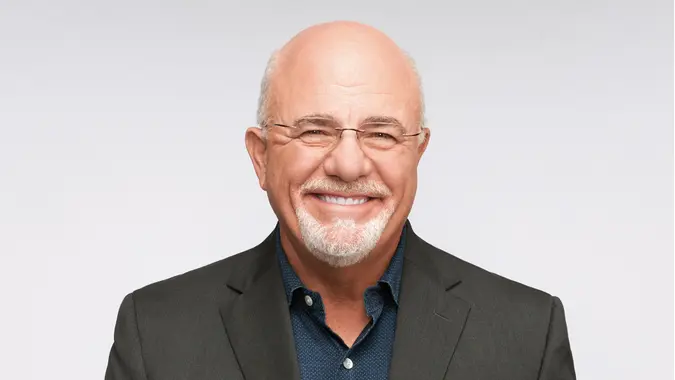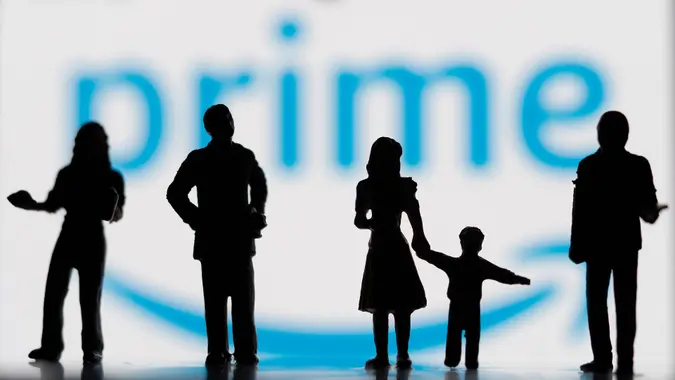Is It Possible to Split Direct Deposits Into Two Accounts?

Commitment to Our Readers
GOBankingRates' editorial team is committed to bringing you unbiased reviews and information. We use data-driven methodologies to evaluate financial products and services - our reviews and ratings are not influenced by advertisers. You can read more about our editorial guidelines and our products and services review methodology.

20 Years
Helping You Live Richer

Reviewed
by Experts

Trusted by
Millions of Readers
Employees paid through direct deposit can split their paychecks into two or even more accounts if their employers allow it, which many do.
How to Split Your Direct Deposit
If your employer already pays through direct deposit, it’s likely that the company supports splitting those deposits into multiple accounts. Check with your HR or payroll department to find out if your workplace allows you to split your direct deposit.
If so, they’ll guide you through the paperwork, which you’ll use to submit the account and routing numbers for the destination accounts and authorize the split.
You don’t need to inform your bank, but you will have to determine how to split the funds in one of two ways.
- As a percentage: Direct some portion of your paycheck to the first account and the remainder to the second, e.g., 85% to checking and 15% to savings.
- As a dollar amount: Choose a sum of cash for the first account and another for the second, e.g., $500 to savings and the remainder to checking.
What Are the Benefits of Splitting Your Direct Deposit?
Nacha, the governing system for electronic money transfers, strongly encourages employees to split their direct deposits, primarily to promote saving.
Its research shows that those who do save $90 more per month than workers who use other methods and strategies to save money.
However, although 82% of workers are paid through direct deposit, barely one in four — 24% — take advantage of deposit splitting despite it being:
- The most direct way to pay yourself first
- Reliable and secure
- Easy to fine-tune and control
- Simple to change if needed
- An effective way to achieve both short- and long-term financial goals
- Free
Is There Anyone Who Shouldn’t Split Their Direct Deposit?
There aren’t many scenarios where harm can come from splitting your deposits.
Low earners or those with many scheduled payments or outstanding checks could run the risk of over drafting if they leave insufficient funds in their primary checking accounts.
How Much Should You Put in Another Account?
One of the benefits of splitting direct deposits is that it enables workers to customize the distributions to meet their specific needs, goals and lifestyles.
According to CNBC, most experts recommend saving one dollar in five from every paycheck. That would split your deposit with 80% going into checking and 20% into savings.
Another common goal is to save six months’ worth of expenses in a dedicated emergency fund, which might alter the formula, depending on your living costs and current savings. Others might split their deposits to focus on things like:
- Saving for a down payment on a home
- Investing
- Long-term wealth-building
- Funding a 529 account for college expenses
The right amount or percentage will vary by employee, but Nacha points out that a worker paid weekly who diverts just $10 into savings every month will end the year with $520 in the bank.
The Bottom Line
Splitting your direct deposit can be a helpful tool that encourages saving, helps you achieve your goals and offers greater control over your finances. However, not all employers support it.
If not, you can get similar results by using your bank’s free tools to automatically divert a specific portion of your paycheck to savings or another account on a set schedule. This, in conjunction with savings buckets, can produce nearly identical results to splitting your direct deposits.
FAQ
- What is a split direct deposit form?
- A split direct deposit form is a document that authorizes employers to divert portions of an employee’s paycheck to multiple bank accounts and provides the corresponding account and routing numbers.
- What is an example of proof of direct deposit?
- A bank-provided direct deposit form, an account statement or even a screenshot of online banking transactions can all serve as proof of direct deposit.
- Is it good to split direct deposit?
- Industry authorities, such as Nacha, and many personal finance experts recommend splitting direct deposits to automate savings and increase your chances of reaching your financial goals.
- What does a split deposit mean?
- When employees split deposits, they instruct their employer’s HR or payroll department to electronically divert a portion of their pay to one account and the rest to another each pay period.
Our in-house research team and on-site financial experts work together to create content that’s accurate, impartial, and up to date. We fact-check every single statistic, quote and fact using trusted primary resources to make sure the information we provide is correct. You can learn more about GOBankingRates’ processes and standards in our editorial policy.
- Nacha "Nacha Research Shows 97% of Workers Ages 22-34 Have a Bank Account and 88% of Them That Are W2 Workers Use Direct Deposit"
- Nacha "Split Deposit"
- Patterson State Bank "Split Deposit: The Workplace Perk that Will Help Employees Build Wealth"
- CNBC "Here’s how much money you should be saving from every paycheck"
 Written by
Written by  Edited by
Edited by 

























